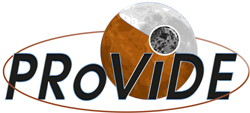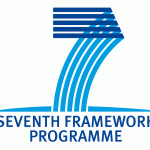MIIGAiK (Moscow State University of Geodesy and Cartography), established in 1799 by Zsar Peter The Great, has 7 faculties including geodesy, cartography, astronomy and space navigation, applied cosmonautics, photogrammetry, optics, information systems and technologies, economy and management, as well as a faculty of humanities. MIIGAiK is among the largest educational facilities worldwide for Geodesy and Cartography (more than 7 000 students and 600 members of the teaching staff including 94 professors and about 300 Ph.D. teachers).
In 2010, the Russian Ministry of Education and Science issued a proposal call to attract foreign scientists to build strong and competitive research groups at Russian Universities. MIIGAiK successfully obtained a (popularly called) “Mega-Grant” to establish the “MIIGAiK Extraterrestrial Laboratory” (MExLab). The Laboratory which had its official opening on September 20, 2011, resorts to modern work places and state-of-the-art computing infrastructure. It has a staff of 40 researchers and students, who are involved in various apsects of Planetary Geodesy and Cartography.
While MIIGAiK was already participating in most missions of the early USSR space program, the new Laboratory will be heavily involved in the support of Luna Glob and Lunar Resource, currently being prepared by Roskosmos. MExLab will contribute to PRoViDE major support of Lunar mapping, namely by means of Lunar image data investigations (past, present and future), performing preprocessing such as geo-referencing, placing surface images and models in PDS, and providing the necessary semantic, geographic and temporal context for these lunar image data sets and the following products.
Key Personnel
Dr. Irina Petrovna Karachevtseva
Irina Petrovna Karachevtseva (Ph.D. in 1995) is coordinator of the MII work group. She is head of MExLabs’s Cartography Group and a specialist in planetary geodesy, cartography and GIS (Geographical Information Systems), developing GIS-oriented information systems for scientific analyses and mapping, including celestial bodies. She took part in “The ICA project of multilingual maps series on celestial bodies”, providing GIS support and creating a multilingual data base of planetary names, and has about 30 publications since 1999. She now works on (1) developing a Phobos information system, including crater database, for geo-analysis and cartography support of the Phobos-Grunt candidate landing sites, (2) developing GIS-technology for analyses of the Lunokhods (Lunokhod-1 and Lunokhod-2) landing site using LROC images and high resolution DEMs, (3) developing GIS Solar System planets for multi-level mapping of celestial bodies.
Anatoly Eduardovich Zubarev
Anatoly Eduardovich Zubarev is a photogrammetry expert and Ph.D. student at MIIGAiK, working in the area of coordinate systems, control points and 3D modelling of figure of small celestial bodies, he also develops algorithms and software for general photogrammetric processing and 3D image visualisation in MExLab.
Prof. Jürgen Oberst
Prof. Jürgen Oberst (see detailed curriculum at TUB page) is currently visiting scientist at MIIGAiK and Scientific director of MExLab.



